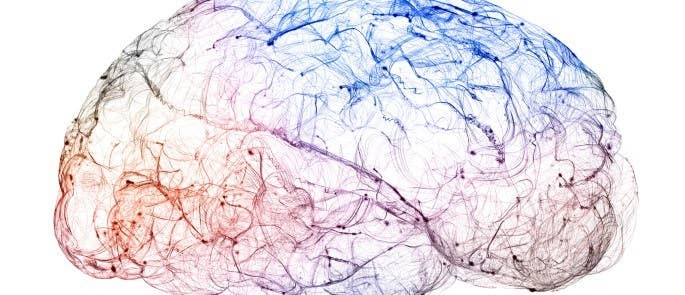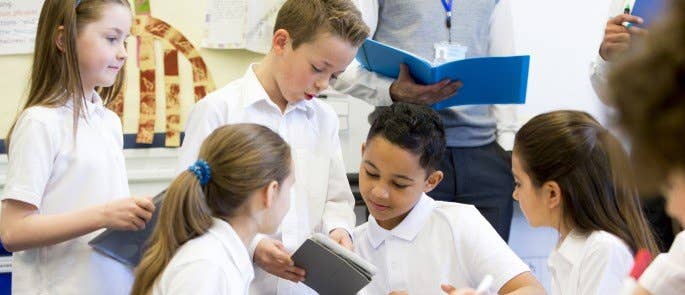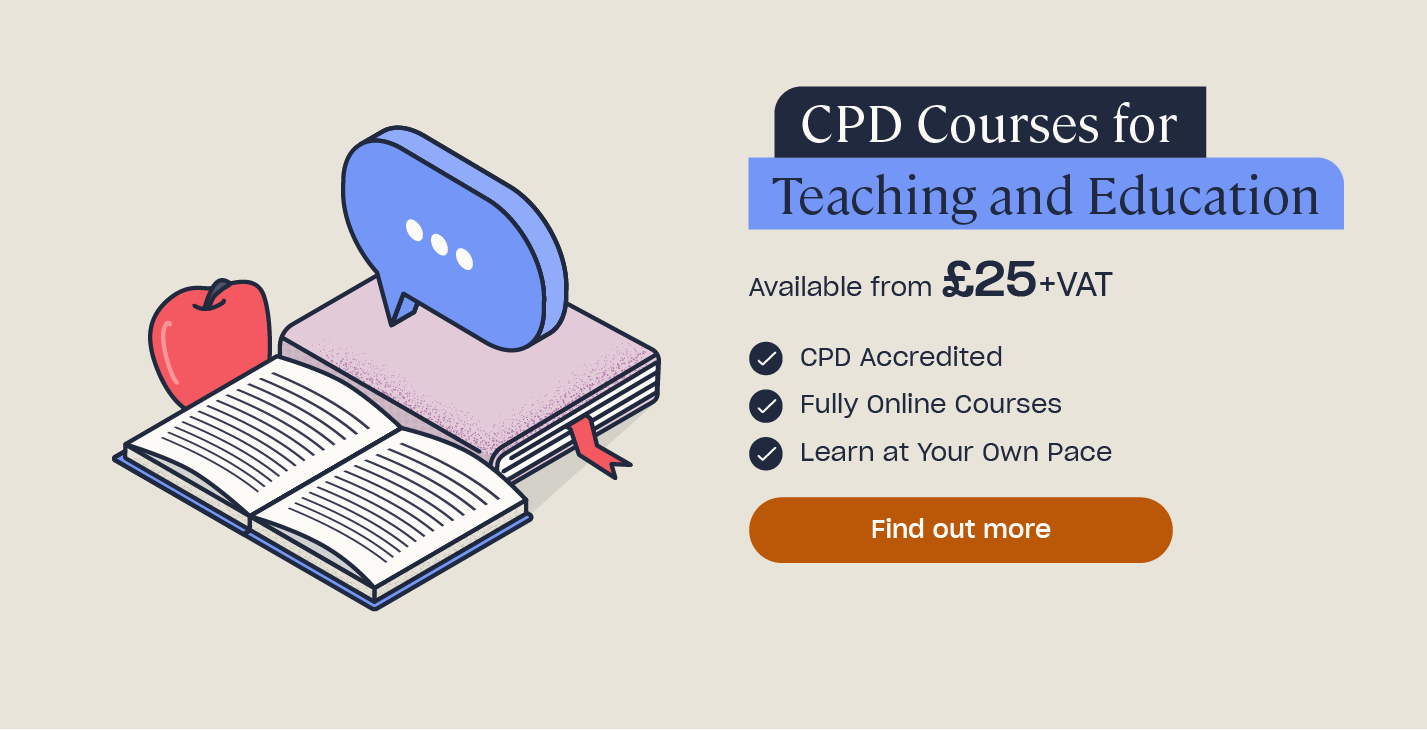How Understanding Different Types of Memory Can Help in Teaching
Human memory involves preserving and recovering information that we have learned or experienced (Cherry, 2020). As teachers, by better understanding how memory works and the relationship between memory and learning, we are in a position to design the most effective learning experiences. This article looks at the memory process, different types of memory, and how they relate to learning. We will then offer some strategies and tips for maximising memory in the classroom, and for supporting children who experience difficulties with working memory in particular.

Use the contents below to jump to a certain section of the article.
What are the Different Types of Memory?
There are many theories relating to the different types of memory and the processes that form it. Whilst a lot is still unknown, most scientists consider there to be at least four general types of memory.
Sensory Memory
Short-Term Memory
Working Memory
- The Central Executive (which drives the whole system).
- The Visuospatial Sketchpad (which stores and processes visual or spatial information).
- The Phonological Loop (which stores and processes written and spoken information).
In 2000, Badderley added a further component – the Episodic Buffer – to this model. This is where information, both visual and phonological, is combined and integrated, along with relevant information from the long-term memory.
You may come across research where the terms ‘short-term memory’ and ‘working memory’ are used interchangeably. While research has found overlap between them, as a teacher it is useful to make the distinction between the storage of the short-term memory and the cognitive process of working memory, which both retains and processes information.
Many children experience difficulties with working memory, which we will explore later in further detail.
Long-Term Memory
For example, you may know that plants use photosynthesis to generate energy. This information is stored in your long-term memory but it is not continually on your mind. When you need to access that information – to plan a science lesson or answer a quiz question – you will call it to your working memory.

Some long-term memories are easy to access whilst others are less so.
Long term memory can be further categorised into:
- Episodic memory – memories of events or experiences. These memories are grounded in context and location.
- Semantic memory – our general knowledge about the world. We remember facts or events, not because we have experienced them, but because we learned them. This learning comes from words, symbols and abstract concepts.
- Procedural memory – these help us complete everyday tasks such as driving. At first, we have to learn how to do these things, focusing on each specific skill involved, but eventually, as they become part of our procedural memory, they become automatic. Procedural memory rooted in learning through motor skills is often referred to as ‘muscle memory’.
- Reflective memory– this is emotionally driven. If a child is upset by a peer, they may remember it for a long time, and then if a similar event occurs, reflect back on that initial occurrence.
Some researchers view these as stages of memory. In such a model, a memory would begin as a sensory memory, then transition to short-term memory, and then may move to a person’s long-term memory (Villines, 2020). One of the goals of teaching is to secure information in a child’s long-term memory, in order that they are able to retrieve it and apply it in different contexts in their lives.
Memory Processes
Generally, the process of memory is thought to be broken down as follows:
- Receiving – input from your senses.
- Encoding –the process of changing information into a usable form. Attention, which can be challenging for some children, plays a large part in this stage.
- Storage – once information has been encoding, it can be stored.
- Retrieval – this is vital, as if you can’t retrieve the memories, they are not much use!
Although the exact mechanism for retrieving memories is not completely understood, it is thought to be a creative process involving piecing different relevant information together rather than simply pulling information out of a store.

When memories are encoded and stored in the brain, they form neural pathways. Each time the information is retrieved, those pathways are strengthened. The more often you need to access the information, the stronger the pathway, and the quicker it is thought the memory can be retrieved.
Retrieval can be broken down into different types and, as a teacher, an awareness of these can help you to plan effective tasks, in order to optimise children’s retrieval processes.
The key elements are:
- Recall –simply remembering without any cues. You might ask – Who was the monarch of England during the reformation? If a child is able to answer Henry VIII, they are using recall.
- Recognition –the process of retrieving previously known information after seeing the thing. In class you might show an image of Henry VIII – if, once they have seen the picture, a child is able to name him, this is recognition.
- Recollection –piecing together or rebuilding memory. To recollect the details of last year’s Tudor Day, a child might use partial memories, clues (such as photographs) and logic.
- Relearning – at its name suggests, this is relearning information that has been previously learned but not remembered. A child may not recall the names of Henry VIII’s wives but know that they have learned this fact before. Providing opportunities for relearning is incredibly important, as relearning strengthens the connections in the brain.
Much of what we ask children to do in class involves elements of retrieval, especially as our curriculums seek to build on what has previously been taught. There are many different factors that could influence the effectiveness of retrieval. These include special educational needs and/or disability (SEND), gender, physical and mental health, activity levels, and even food consumption – we know the difference eating breakfast can make to a child’s learning potential!

The Relationship Between Memory and Learning
There are many different theories and definitions of learning, but an influential one, which underpins the current Ofsted inspection framework, is grounded in memory.
The aim of all instruction is to alter long-term memory. If nothing has changed in long-term memory, nothing has been learned.
(Kirschner, Sweller, & Clarke, 2006)
If the goal is to change long-term memory, then as teachers we need to make sure that we are planning opportunities for:
- The effective acquisition of new memories, which can be encoded and eventually stored in pupils’ long-term memories.
- Repeated retrieval of those memories.
- Strategies to be put in place to support children who experience difficulties at any stage of the process.

Long-Term Memory and Learning – Schemas
Within the long-term memory, information is stored in a range of schemas. Schemas are structures that link knowledge and create meaning (Ofsted, 2019). These build up over time, becoming more complex as more is learned. A child in Year 1 may possess quite a simple schema relating to ‘multiplication’ – perhaps linked to what they know about addition, and visual images of arrays. As that child progresses through their school journey, that particular schema will become more complex, as other areas of learning are linked to it (times tables, fraction, decimals, formal procedures, algebra, etc.,).
By designing curriculums and programmes of study that consider how these schemas build and strengthen over time, both within subjects and across the curriculum, the learning potential can be maximised. A spiral curriculum (where elements are revisited regularly) can further optimise retrieval, by purposefully building in time to ‘forget’ and ‘retrieve’.

Working Memory and Learning – Cognitive Load Theory
As we have seen, before something can enter or alter the long-term memory, the information needs to be encoded and processed by the working memory. Working memory has a limited capacity. If a learning activity places too much pressure on a learner’s working memory (presents too high a cognitive load), then learning will not be able to take place. That information will not be added to their schemas.
The Ofsted framework recommends planning activities for children which do not require the learner to use too much working memory capacity, until they have acquired enough knowledge to minimise processing.
In practical terms this might mean including scaffolds to make sure that the activity is concentrated on what the child needs to be learning, and doesn’t carry any additional burden for their working memory.
When teaching speech punctuation, you might at first give them the sentences to punctuate. Having to construct sentences simultaneously would present too high a cognitive load. You might also add some visual aids to further reduce the load, or narrow the focus of the task (i.e., having only the inverted commas missing).

Later, when the knowledge is more established and you want them to practise retrieving the information, you would remove some of the scaffolds, until eventually they would have the knowledge to apply all aspects of speech punctuation independently.
Essentially you need to be very clear about what ‘the learning’ is, then, considering the individual child and their current knowledge, plan how to best facilitate that learning. You will already be doing this as part of your everyday good teaching practice – although you might not explicitly be considering it in light of memory processes or related theories.
Why is Working Memory Important?
Working memory is a cognitive process that allows us to use information without losing track of what we are doing.
If you wrote 15 + 8 = ? on the board for a child to solve, they would need to access, keep in mind, and manipulate, the following information:
- What the digits, 1, 5 and 8 mean.
- What the digits mean in their place value here.
- What + refers to.
- What = refers to.
- What the ? is asking of them.
- What the concept of addition entails.
- What their learned methods of addition are.
- Which method they should use in this case.
- Whether they need to solve this mentally or can use written methods.
- How they need to give the answer.
As you can see, what seems like an incredibly simple classroom task is actually quite complex. As children become more practised at this kind of task, the processing will become quicker and take less toll on the working memory.
Working memory is arguably the most important element of the process to be considered in the classroom. It has even been found to be a better predictor of future academic performance than IQ (Alloway & Alloway, 2014). In addition to formal learning activities, children need to use their working memory to follow all instructions given to them.
10% of children suffer from working memory problems (Gathercoe, 2008) and working memory capacity varies from person to person. If a child’s working memory is overloaded or they are distracted, information can be permanently lost from working memory. Therefore, it is important that teachers are aware of planning for optimal cognitive load, and of how to spot signs of working memory difficulties.

What Might Be Signs of Working Memory Difficulties?
A child or young person with potential working memory difficulties might have:
- Poor academic attainment and progress in some or all areas.
- Difficulty following instructions, especially complex ones.
- Trouble accessing tasks that require more than one step.
- Place-keeping difficulties – losing track of what they are doing.
- The appearance of being inattentive or easily distractible.
- Difficulty with planning and organisation.
- Difficulty applying what they’ve learnt to new situations or environments.
- Trouble thinking and doing at the same time.
- Difficulty participating in group activities, often seeming reserved.
- Difficulty following conversation with their friends.
- Low self-esteem.

Memory difficulties are categorised under the wider area of need of Cognition and Learning Difficulties (2015 SEND Code of Practice). As with all SEND, there is considerable overlap between areas of need and, to effectively support SEN in the classroom, each child’s strengths and difficulties should be considered individually.
There is evidence that neurodiverse children, such as those with Autism Spectrum Disorder or a Specific Learning Difficulty (including dyslexia, dyspraxia and dyscalculia), may experience difficulties with aspects of executive function, which includes working memory.
As attention plays an integral part in encoding memories, children with disorders that affect attention, such as Attention Deficit Disorder (ADD) or Attention Deficit Hyperactivity Disorder (ADHD), are also likely to experience issues with their working memory.
Want to Learn More About SEND?
Find out more about prevalent SEND in our dedicated training courses, from Autism Awareness to ADHD Training. Take a look at our course library to browse the full list of available courses.
How Can Memory Be Supported in Teaching and Learning?
There are some general strategies that can help us adapt our teaching in light of the interplay between memory and learning.

-
- Do not ‘teach to the test’ – the wider the curriculum, the more opportunities there are for children to see links, and establish schemas.
- Allocate time for pupils to embed knowledge – this should include opportunities for overlearning.
- Design learning experiences to reduce working memory ‘load’ – this help promotes schema acquisition (Heik, 2017).
- Break information and learning down into manageable chunks for the pupils.
- Use a multisensory approach. Providing visual and verbal information (dual-coding), increases the opportunity for storing that information.
- Aid schema formation by explicitly demonstrating patterns, connections and relationships between new and old learning (Willis, 2019). This can be done in many ways and on various levels – from a spiral curriculum to using concept maps to recapping a previous lesson’s content.
- Include interleaved practice – mix the types of activities and vary the outcomes.
- Include regular practice testing (Dunlosky et al, 2013) – including quizzes or practice assessments. To be most effective this needs to be ‘low stakes.’
- Encourage a classroom culture of metacognition. Enabling children to reflect on how they are learning has been shown to be a high impact strategy. Our Hub article, Metacognition in the Classroom, explores this in further detail.
- Encourage children’s wellbeing and be alert to any signs of mental ill health. Stress and anxiety can significantly impede memory.
- Teach children about habits that help our brain to function well – such as sleep, screen usage, exercise, and nutrition.
Classroom Strategies for Improving Working Memory
In addition to the general good practice above, there are further strategies that can be put in place to help increase memory power in students. These strategies can be adapted for children of all ages, and putting them in place from an early age can increase their effectiveness.

Teaching and Learning Strategies
- Adapt your language – be aware of the complexity of your instructions. Make sure they are as short as possible and given in the order they need to be done.
- Peer teaching – by explaining new learning to someone else, children are retrieving and rehearsing information, strengthening the neural pathways of that memory.
- Use written or visual prompts to accompany verbal instructions. Some children may benefit from personal visual scaffolds, such as task management or ‘now and next’ boards, to ease the load on their working memory. For younger children especially, you can also use action to reinforce learning.
- Visual reference material around the classroom – working walls can be used to represent the steps that need to be taken to successfully complete the activity, and examples of What a Good One Looks Like (WAGOLLs) to show children what they are aiming to produce.
- Virtual learning environments – for setting homework use one with a to do list function. This can help to support pupils’ self-organisation and keep track of what they need to do.
- Create routines –these can reduce cognitive load, and are especially useful for the tasks that surround the learning (such as gathering equipment or presenting work).
- Personal strategies to aid memory – explicitly teach children strategies to use independently. This could be notetaking, using graphic organisers, or creating mnemonics. By being exposed to a variety of techniques, children can find what works best for them.
- Experiences – plan in some activities so learners can ‘experience’ the information and reinforce learning through episodic memory. This could include role playing and other drama activities, group activities, or debates. Asking children to dissect a heart after learning about the different chambers reinforces their semantic memory (learning the names and locations of the chambers of the heart) with an episodic memory (the experience of dissecting the heart), in addition to adding a multisensory element.
- Verbalising – regularly allow children to verbalise their tasks – ask, ‘What are you doing now? What will you do next?’
- Play memory games – these can be whole class, small group or individual, and on- or off-line.
Memory Techniques for Studying
Many of these teaching and learning strategies can also help older children and young adults to improve their memory power when revising or conducting independent study.
- Chunking information and returning to subjects, rather than studying in large blocks.
- Making connections – use knowledge organisers or mind maps to visually connect the information that has been learned.
- Encouraging visualisation of concepts – drawing charts or figures to represent the learning.
- Encouraging active learning and reading – this includes formulating their own questions and taking notes. Simply highlighting notes, however, has been found to have little effect (Dunlosky et al, 2003).
Memory and learning go hand in hand, so it is useful to have an awareness of how memories are formed, what the different types of memory are, and how your teaching practices can maximise learning opportunities. It is also vital to have an understanding of working memory, its limitations and how to reflect this in your planning and teaching. Some children will need specific strategies put in place to further support working memory difficulties. We hope you find this information useful for your practice.
Further Resources:
CPD Courses for Teaching Staff
Autism Awareness in Education Course
Supporting Pupils with SEN in the Classroom: Guidance for Teachers
Metacognition in the Classroom: Benefits & Strategies
Effective Communication in the Classroom: Skills for Teachers












